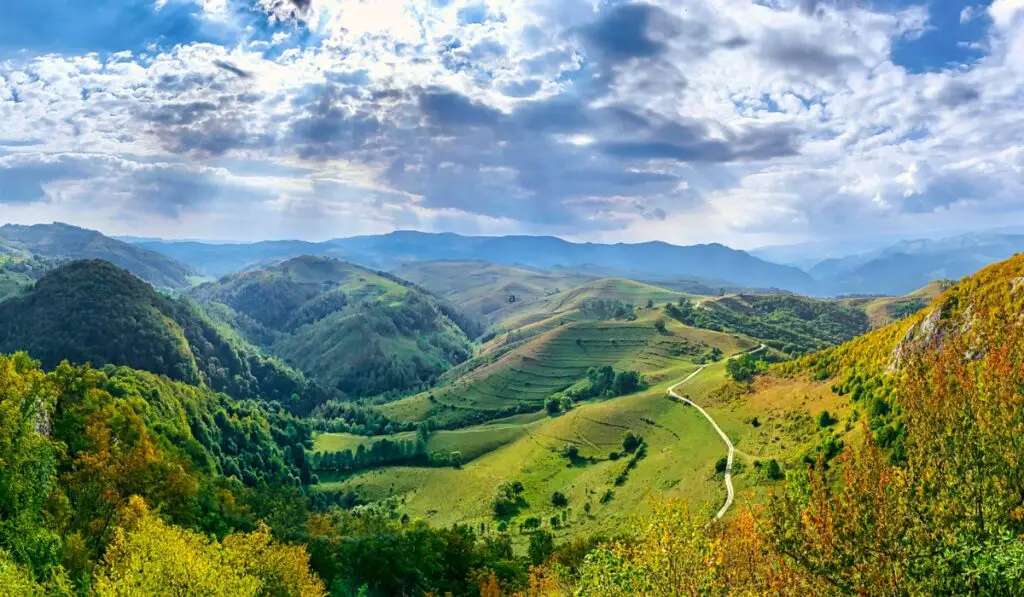This post may contain affiliate links. At no cost to you, purchases made through these links may result in a small commission for Traveling Transylvania. We never recommend products that we don’t know and trust. Thank you for your continued support!
Nestled deep within the heart of Romania lies a realm of unrivaled beauty and wonder, the Apuseni Mountains. Imagine a place where nature’s artistry reaches its peak, where every trail unveils a secret, and every panorama feels like a painter’s masterpiece.
Whether you’re an adventurer hungry for the next thrilling Romanian hike or a curious traveler looking to delve into hidden histories, the Apuseni Mountains beckon with promises of enchantment. As we journey through the lush forests, cascading waterfalls, and ancient caves of this pristine paradise, you’ll soon discover why the Apuseni is hailed as Romania’s best-kept secret.
So, lace up those hiking boots and grab your adventurer’s hat; the mesmerizing world of Apuseni Mountains awaits your exploration!
- Location and Geography
- Natural Wonders of the Apuseni
- Sites of Interest in the Apuseni Mountains
- Popular Hiking Trails in the Apuseni Mountains
- Must-Visit Villages in the Apuseni Region
- Cultural and Historical Insights: The Soul of Apuseni
- Practical Information for Travelers
- Unveiling the Splendors of Apuseni: A Hiker's Paradise
Location and Geography
Tucked away in the western part of Romania, the Apuseni Mountains form a breathtaking segment of the Carpathian Mountain range. These magnificent peaks are predominantly situated in Alba County, though they stretch their beauty across parts of Bihor and Cluj counties as well.
But where exactly are they? For those navigating with the help of an Apuseni Mountains map, you’ll find this range nestled comfortably between the cities of Cluj-Napoca to the north and Oradea to the west, creating a scenic buffer zone that’s replete with diverse landscapes.
Location on Google Maps: Apuseni Mountains
Geographically, the Apuseni Mountains offer a mix of high ridges, deep caves, and everything in between. With peaks that rise to over 1,800 meters, such as Cucurbăta Mare, it’s a haven for those seeking elevation. But the Apuseni isn’t just about the heights. Its karst topography has given birth to some of Europe’s most impressive and intricate cave systems, making it a spelunker’s dream destination.
Notably, the region stands out for its unique geomorphological features, which comprise dense forests, meandering rivers, and vast meadows. These landscapes not only offer visual splendor but are also home to a diverse set of flora and fauna, ensuring that every nature enthusiast finds something to marvel at.
Easily accessible from major cities like Cluj-Napoca, the Apuseni Mountains provide a peaceful retreat from urban hustle. Whether you’re traveling by car, bus, or even by bike, the journey to these mountains is as captivating as the destination itself, with winding roads offering panoramic views of the Romanian countryside.
The Apuseni Mountains are not just a geographical location; they’re a rich tapestry of nature, history, and culture, interwoven seamlessly in the Romanian heartland. This mountain range promises an experience like no other.
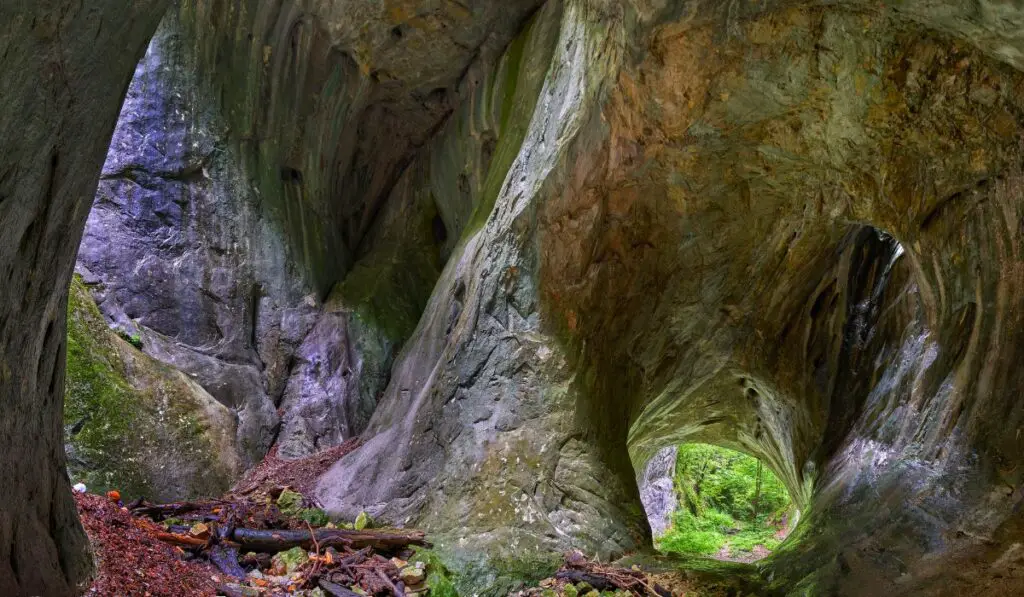
Natural Wonders of the Apuseni
The Apuseni Mountains are a veritable treasure trove of nature’s finest artworks. Every turn, every trail, and every viewpoint unfurls a scene that seems almost too majestic to be real. As we delve deeper into these natural wonders, it’s not hard to see why Apuseni is often dubbed the ‘green heart’ of Romania.
Untamed Forests: The vast expanse of dense forests is home to an array of wildlife, from nimble-footed deer to melodious songbirds. The forests’ canopies are a kaleidoscope of green during spring and summer, turning into a painter’s palette of reds, oranges, and yellows in the autumn months.
Majestic Waterfalls: Hidden amidst these forests are cascades that tumble from dizzying heights. The sound of rushing water, the misty sprays, and the pristine pools below are a testament to the raw, unbridled power of nature in the Apuseni Mountains.
Spellbinding Caves: The karst landscapes of Apuseni hold within them a world that’s as mysterious as it is beautiful. The caves here, many still undiscovered, are portals to an underground realm of stalactites, stalagmites, and ancient legends.
Rippling Rivers and Lakes: The waters of Apuseni are crystal clear, reflecting the azure of the sky and the lush greenery that surrounds them. Whether you’re keen on fishing, boating, or just a quiet day by the riverbank, these serene water bodies offer respite and recreation.
To truly appreciate the Apuseni Mountains’ natural wonders, one needs to immerse oneself in its embrace. Whether you’re hiking up its trails, camping under the star-studded skies, or just pausing to take in the view, you’ll find that nature speaks in a language that touches the soul here. So, prepare to be enchanted, for the Apuseni experience is one that lingers long after the journey ends.
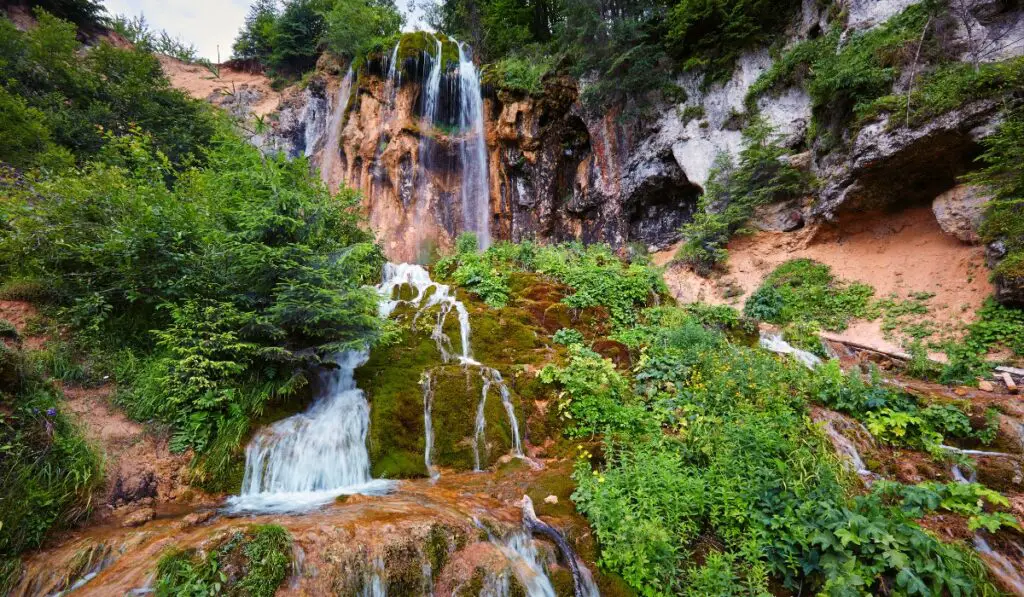
Sites of Interest in the Apuseni Mountains
Embarking on an expedition to the Apuseni Mountains, you’ll be met with more than just scenic vistas. Every nook and cranny tells a tale, each landmark bursting with historical, cultural, and natural significance. Let’s embark on a virtual tour of some of these awe-inspiring sites:
Pisoaia Waterfall
A force of nature gracefully descending from the heights, Pisoaia Waterfall is an oasis of tranquility. The water, gushing over layered rocks, forms ethereal patterns that captivate the onlooker. Surrounded by dense forestry and melodious bird calls, this spot offers a meditative experience that rejuvenates the soul. It’s more than just a waterfall; it’s a symphony of sights and sounds that defines the very essence of Apuseni’s natural charm. **Pictured above**
Location on Google Maps: Pisoaia Waterfall
The Hill with Snails
A testament to nature’s quirks, The Hill with Snails is a geological wonder. The hill gets its name from the countless fossilized snail shells embedded within its rock formations. These ancient remnants offer a peek into a bygone era, making this site an essential stop for both nature lovers and history enthusiasts. As you traverse the hill, every step feels like a journey back in time.
Location on Google Maps: Hill with Snails
Avram Iancu Memorial House
Delve deep into the pages of Romanian history as you step into the Avram Iancu Memorial House. Dedicated to the memory of Avram Iancu, a revered national hero, this house offers insights into his life, struggles, and the larger Romanian national movement. Filled with artifacts, personal belongings, and photographs, this site serves as a poignant reminder of the region’s rich cultural tapestry.
Location on Google Maps: Avram Iancu Memorial House
Varciorog Waterfall
Varciorog Waterfall stands as a majestic sentinel amidst the lush landscapes of Apuseni. Its cascading waters, plunging into a serene pool below, offer an idyllic setting for nature enthusiasts and photographers alike. The surrounding trails lead to vantage points that provide panoramic views of this natural marvel, making it an unmissable spot on every traveler’s Apuseni itinerary.
Location on Google Maps: Varciorog Waterfall
Ionele’s Door Cave
The Ionele’s Door Cave is a subterranean wonder, adorned with intricate rock formations and echoing the mysteries of the deep earth. Its chambers and tunnels, formed over millennia, invite explorers to traverse their depths. The ambient temperature, the silent whispers of dripping water, and the cave’s ethereal beauty make this site a haven for spelunking enthusiasts.
Location on Google Maps: Ionele’s Door Cave
Scarisoara Glacier Cave
Step into a realm where ice and rock coalesce in mesmerizing patterns. The Scarisoara Glacier Cave houses one of the oldest and largest underground glaciers in the world. Its chambers, illuminated in a pale blue glow, showcase ice formations that seem straight out of a fantasy novel. A testament to nature’s artistry, this cave is a chilly, enchanting realm that promises awe at every turn.
Location on Google Maps: Scarisoara Glacier Cave
Museum of Ethnography “Horia and Aurel Flutur”
This museum is a vibrant tapestry of Apuseni’s cultural and ethnographic heritage. Showcasing traditional costumes, tools, crafts, and household items, the museum provides a deep dive into the region’s bygone eras. Visitors leave with a newfound appreciation for the rich traditions and history that have shaped the Apuseni’s unique cultural identity.
Location on Google Maps: Museum of Ethnography “Horia and Aurel Flutur”
The Bears’ Cave
Bearing imprints of its prehistoric inhabitants, The Bears’ Cave is named after the numerous bear fossils discovered within its chambers. But beyond its paleontological significance, the cave dazzles with its intricate stalactites and stalagmites, each formation narrating tales of time and tectonics. A journey into this cave is a blend of history, science, and sheer natural beauty.
Location on Google Maps: The Bears’ Cave
Ruginoasa Pit
A geological marvel, the Ruginoasa Pit showcases the raw, unbridled power of erosion. Its steep walls, painted in shades of red and orange, form a stark contrast against the verdant surroundings. This awe-inspiring pit, carved by nature over thousands of years, stands as a testament to the ever-evolving landscapes of the Apuseni Mountains.
Location on Google Maps: Ruginoasa Pit
Meziad Cave
Meziad Cave beckons with the allure of the unknown. A sprawling underground network, this cave’s tunnels, chambers, and alcoves invite exploration. Home to unique rock formations, underground streams, and a rich biodiversity, the Meziad Cave promises an adventure that’s both exhilarating and enlightening.
Location on Google Maps: Meziad Cave
Each of these sites in the Apuseni Mountains offers a unique glimpse into the region’s multifaceted charm. Whether you’re drawn by the call of history, the allure of nature, or the thrill of adventure, Apuseni promises experiences that linger in memory long after the journey concludes.
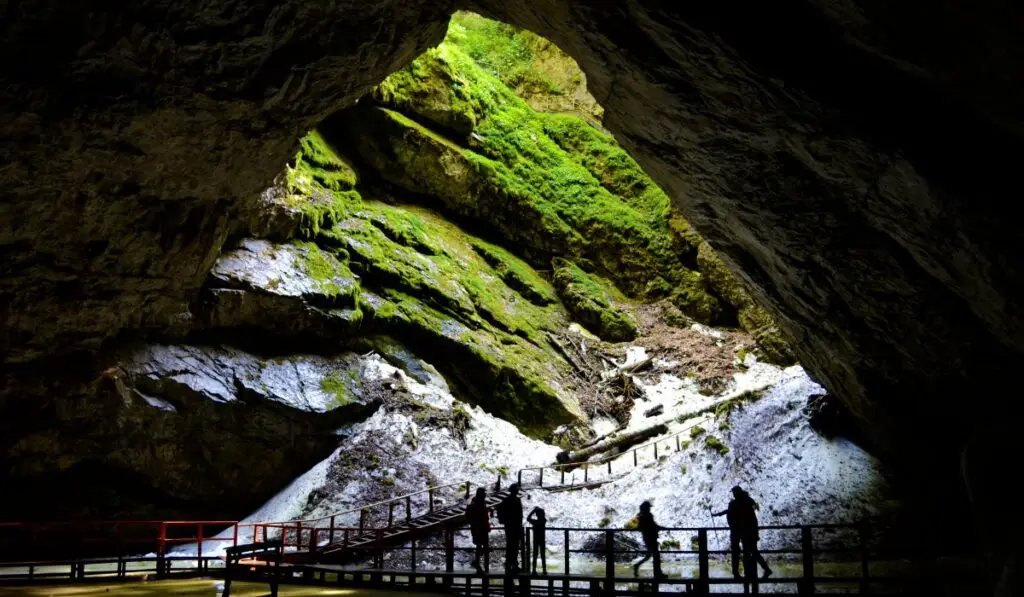
Popular Hiking Trails in the Apuseni Mountains
The Apuseni Mountains beckon adventurers with a plethora of hiking trails, each promising distinct vistas and experiences. Whether you’re a seasoned trekker or someone seeking a leisurely walk, Apuseni offers trails that cater to every inclination. Let’s explore some of the most popular hikes:
Pisoaia Waterfall Trail
Starting from Vidra Village, this easy 2-hour round trip leads you through picturesque forested paths to the melodious Pisoaia Waterfall, best visited in spring for its full cascading glory.
- Duration: 2 hours round trip
- Trailhead: Vidra Village
- Difficulty Level: Easy
- Tips: Wear water-resistant shoes as certain sections can get wet. The best time to visit is during spring when the waterfall is at its most voluminous.
Ruginoasa Pit Circuit
This moderate loop from Boga Village takes hikers through varied terrains, culminating in the striking colors of the Ruginoasa Pit—a geologic wonder best observed during the golden hours.
- Duration: 4 hours
- Trailhead: Boga Village
- Difficulty Level: Moderate
- Tips: The trail involves some steep descents; trekking poles might be helpful. The colorful hues of the pit are best viewed during the golden hours of sunrise and sunset.
Scarisoara Glacier Cave Trek
Beginning at Garda de Sus, this 3-hour trail guides you to the entrancing interiors of the Scarisoara Glacier Cave, a chilly subterranean marvel with glistening ice formations.
- Duration: 3 hours round trip
- Trailhead: Garda de Sus
- Difficulty Level: Moderate
- Tips: The cave’s interior is chilly year-round, so carry a light jacket. Flashlights or headlamps are also beneficial for better visibility inside the cave. *Pictured above.*
Padis – Fortresses’ Plateau Circuit
Originating from the Padis area, this challenging circuit explores dense forests and open meadows, offering panoramic vistas of the Apuseni’s diverse landscapes.
- Duration: 6-7 hours
- Trailhead: Padis Area
- Difficulty Level: Challenging
- Tips: Ensure you have a map or GPS since the trail includes forested sections and meadows. Carry sufficient water and snacks, as there aren’t many refill points along the way.
Meziad Cave Trail
A relatively easy hike from Meziad Village, this trail culminates in the cavernous depths of Meziad Cave, home to intricate rock formations and a significant bat population.
- Duration: 2.5 hours round trip
- Trailhead: Meziad Village
- Difficulty Level: Easy
- Tips: The cave is home to a significant bat population; be respectful and minimize disturbances. Proper footwear is essential as certain portions inside the cave can be slippery.
Varciorog Waterfall Hike
Setting off from Arieseni, this 2-hour journey takes you along serene trails, concluding at the multi-tiered beauty of the Varciorog Waterfall.
- Duration: 2 hours round trip
- Trailhead: Arieseni
- Difficulty Level: Easy to Moderate
- Tips: This hike can get crowded during weekends, so for a peaceful experience, consider visiting on a weekday.
Raven’s Nest Lookout Trek
Launching from Poiana Ponor, this moderate hike climbs to the Raven’s Nest Lookout, offering sweeping views of the Apuseni Natural Park and serving as a prime spot for raptor birdwatching.
- Duration: 4 hours round trip
- Trailhead: Poiana Ponor
- Difficulty Level: Moderate
- Tips: This trek offers panoramic views of the Apuseni Natural Park, so don’t forget your camera! It’s also an excellent spot for birdwatching, particularly raptors.
Before embarking on any hike, always check weather conditions, inform someone about your itinerary, and ensure you have essential gear like good hiking shoes, a hat, sunscreen, and ample water. The Apuseni Mountains’ trails are not just a test of physical mettle but are soul-stirring journeys through nature’s magnificence. Enjoy every step!
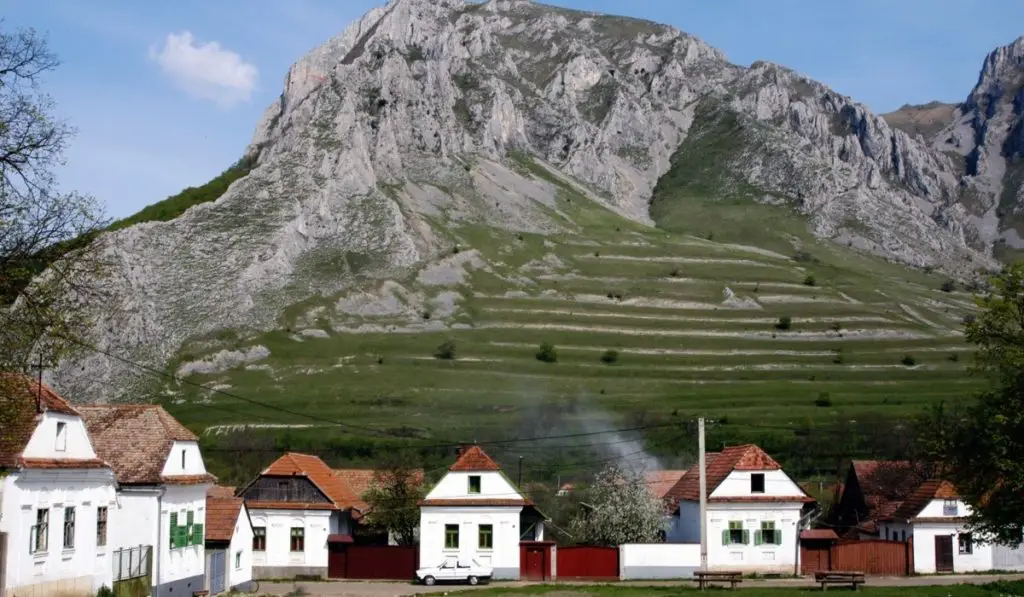
Must-Visit Villages in the Apuseni Region
Nestled within the vast expanses of the Apuseni Mountains are charming villages, each telling its own tale of tradition, history, and natural beauty. These settlements, characterized by their rustic appeal, offer visitors a genuine taste of Apuseni’s soul.
- Belis: Known for the picturesque Belis-Fantanele Lake, this village is a haven for nature enthusiasts. The submerged church’s steeple, visible when the water level drops, hints at a village drowned to create the reservoir, adding an element of mystique to the landscape.
- Marisel: Situated on a plateau, Marisel is a winter wonderland, becoming a popular spot for skiing and snowboarding. Its wooden churches and traditional houses make for a scenic backdrop.
- Rimetea: A recipient of the “Europa Nostra” award for conservation, Rimetea is famous for its whitewashed houses with green windows. The village, set against the backdrop of the Piatra Secuiului mountain, offers a taste of Hungarian culture. *Pictured above*
- Rosia Montana: Rooted deep in history, Rosia Montana boasts ancient Roman mines and historical galleries. As a hub of gold mining for nearly two millennia, its landscape is dotted with mining relics.
- Smida: A gem for water sports enthusiasts, Smida is located by a pristine lake, perfect for kayaking and fishing. The annual Smida Jazz Festival attracts music aficionados, turning this quiet village into a vibrant cultural hub.
- Gârda de Sus: A gateway to many of the region’s caves and gorges, Gârda de Sus is an explorer’s paradise. The nearby Scarisoara Ice Cave is a popular attraction.
- Arieseni: Located at the confluence of the Ariesul Mare and Ariesul Mic rivers, Arieseni is a scenic village renowned for its waterfalls and hiking trails. Its traditional wooden architecture complements the natural beauty.
These villages, each unique in its offerings encapsulate the region’s essence, promising memorable encounters with history, culture, and nature.
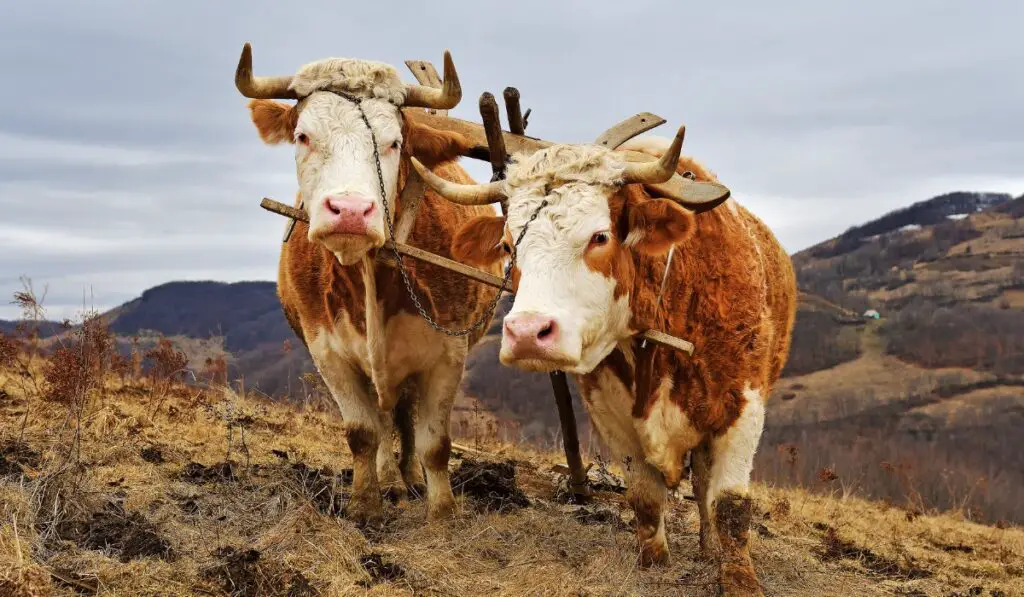
Cultural and Historical Insights: The Soul of Apuseni
Peeling back the layers of the Apuseni Mountains reveals more than just natural beauty. Nestled within these peaks and valleys lies a rich tapestry of culture, tradition, and history. Dive into the narratives that have shaped this region, making it not just a geographical marvel but a reservoir of human stories.
The People of Apuseni
The mountain dwellers, often referred to as the ‘Moti’, are known for their resilience, warmth, and deep-rooted traditions. Living in harmony with nature, they have preserved ancient practices, from crafting to folklore, ensuring that the soul of Apuseni is passed down through generations.
Traditional Celebrations
Apuseni comes alive with festivals and celebrations that mark the calendar. These events, filled with music, dance, and feasting, are an embodiment of the region’s vibrant cultural ethos. Visitors during festival times can witness the colorful attires, soulful songs, and communal bonhomie that defines the spirit of Apuseni.
Popular local celebrations
- “Junii” Festival: Celebrated in spring, the “Junii” Festival is a beautiful blend of pagan rituals and Christian traditions. Young men, or “junii,” dressed in colorful, ornate costumes, ride horses through the villages, symbolizing the triumph of life over death. Dancing, singing, and feasting are integral to this festival, making it a visual and auditory delight.
- The Hora of Prislop: Held in August in the village of Prislop, this is a traditional dance festival where locals and visitors join hands in large circles, dancing to the tunes of traditional Apuseni music. It’s a celebration of unity, music, and the spirit of togetherness.
- Winter Customs Festival in Bucium: As winter sets in, Bucium comes alive with age-old traditions. This festival sees participants donning masks and costumes representing animals, spirits, and mythical characters. Through songs, dances, and theatrical performances, they drive away evil spirits, ushering in a prosperous new year.
- Nedeia of the Moţi: “Nedeia” is an ancient pastoral celebration that marks the ascent of shepherds with their flocks to the high mountain pastures. Characterized by traditional songs, dances, and, notably, the shepherds’ iconic long horn called “bucium,” this festival connects the people of Apuseni to their pastoral roots.
- Apple Festival in Zarand: Held in autumn, this festival celebrates the apple harvest. Local varieties of apples are showcased, and the event is complete with folk music, dances, and, of course, an array of apple-based delicacies, from pies to cider.
- Craftsmen’s Fair in Albac: This fair, more than just a celebration, is a tribute to the artisans of Apuseni. Traditional crafts, from pottery to weaving, are on display. Visitors can also engage in workshops, learning the age-old techniques that shape these crafts.
Art and Craftsmanship
Hand-woven textiles, intricate wood carvings, and traditional pottery – the Apuseni Mountains are a hub of artisanal craftsmanship. These crafts, passed down through generations, tell tales of the region’s history, beliefs, and aesthetics. Stopping by local markets or artisan workshops can offer travelers a tangible piece of Apuseni to take back home.
Historical Landmarks
Beyond the natural sites, the Apuseni Mountains are dotted with landmarks that stand as sentinels of history. From ancient fortresses that have witnessed battles and sieges to churches and monasteries that have served as spiritual epicenters, these structures offer insights into the region’s historical tapestry.
Key sites include the Avram Iancu Memorial House, which pays homage to a Romanian national hero; the ancient gold mines of Rosia Montana; the ruins of the 13th-century Cetatea Colțești (Colțești Fortress); and the naturally magnificent Ponor Fortress with its evidence of ancient human habitation.
Adding to the region’s rich heritage are the Wooden Churches, emblematic of 17th and 18th-century craftsmanship and spirituality, and traditional wooden houses that mirror the cultural essence of Apuseni. Collectively, these landmarks weave a narrative of the mountains’ storied past, intertwining nature, culture, and history.
Legends and Folktales
Every peak, valley, and stream in Apuseni comes with its own legend. The mountains echo with tales of brave warriors, star-crossed lovers, and mystical creatures. Engaging with locals and hearing these folktales firsthand adds a layer of magic and mystery to the Apuseni experience.
One such legend speaks of the “Gold of the Apuseni,” where the mountains were believed to conceal vast golden treasures protected by supernatural beings called “zânas” or “fairies.” These ethereal guardians, often depicted as beautiful women, would punish those who sought gold out of greed but reward the pure-hearted.
Another popular tale revolves around the caverns and caves of the region, believed to be gateways to the underworld or homes to mystical creatures. The Scarisoara Cave, for instance, is sometimes spun into tales as a sleeping chamber for giants during wintertime. Love stories, too, find their place, like the one about a beautiful maiden trapped by an evil force in the mountains, turning into a flower, and awaiting her lover’s rescue. Through such tales, the Apuseni Mountains come alive, not just as a physical realm but as a landscape of dreams, hopes, and timeless narratives.
Culinary Delights
The Apuseni Mountains’ culinary landscape is a delightful melange of flavors. Drawing from the land’s bounty, traditional dishes here are hearty, flavorful, and reflective of the region’s agrarian roots. Savoring these dishes, from stews to pastries, offers a taste of Apuseni’s warmth and hospitality. Don’t forget to wash it down with a glass of Romanian wine!
Museums and Heritage Centers
For a structured dive into Apuseni’s cultural and historical narratives, visiting the region’s museums is a must. These centers, through artifacts, exhibits, and interactive displays, offer comprehensive insights into the mountains’ past and present.
Popular museums in the region
- Museum of Ethnography “Horia and Aurel Flutur”: Located in Seini, this museum is a tribute to the traditional life of the Apuseni people. Named in honor of the Flutur brothers, the museum boasts a diverse collection, from folk costumes to household artifacts, that showcase the day-to-day life, rituals, and crafts of the region.
- The Gold Museum in Brad: An homage to the region’s gold mining history, this museum in Brad houses a unique collection of gold pieces, mining tools, and geological displays. Here, visitors can trace the intricate journey of gold extraction and its significance in the cultural evolution of the area.
- Arieseni Ethnographic Museum: Situated in the heart of the mountains, this museum offers a glance into the rustic charm of Apuseni life. With exhibits centered on traditional crafts, woodworking, and the renowned art of weaving, visitors can immerse themselves in the tactile and visual wonders of Apuseni craftsmanship.
- Rosia Montana Mining Museum: As a testament to Rosia Montana’s rich mining heritage, this museum showcases mining techniques spanning from Roman times to the modern era. With underground tours, ancient artifacts, and detailed exhibits, visitors can delve deep into the region’s mining legacy.
- “Avram Iancu” Memorial Museum in Vidra: This museum, situated in the birthplace of the Romanian national hero Avram Iancu, captures his pivotal role in the 1848 Revolution. Alongside personal artifacts and documents, the museum also delves into the broader context of the revolution and its significance in shaping modern Romania.
To truly understand the essence of the Apuseni Mountains, one must engage with its cultural and historical underpinnings. The peaks and valleys, while breathtaking, are but a backdrop to the human stories that have unfolded here for centuries. As you traverse Apuseni, remember to pause, listen, and immerse in the tales that make this region truly timeless.
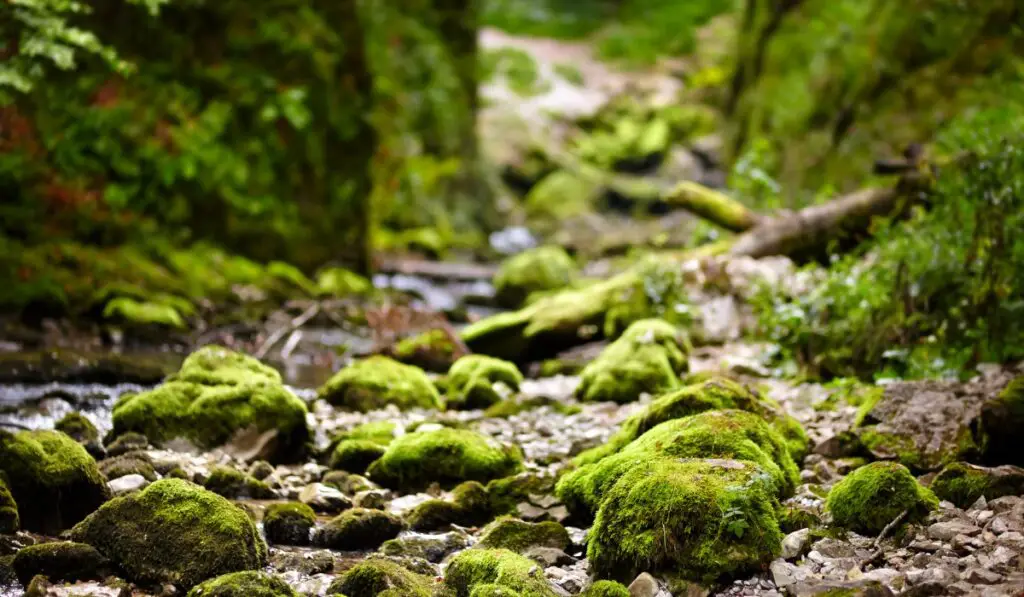
Practical Information for Travelers
No journey is complete without a bit of practical planning. Ensuring a smooth trip to the Apuseni Mountains requires knowledge of some essential details. From accommodation options to weather insights, this section will provide you with a handy guide to ensure you’re well-prepared for your Apuseni adventure.
Getting There
By Air: The closest major airport to the Apuseni Mountains is Cluj-Napoca. From there, you can hire a car or use public transport to reach your desired destination in Apuseni.
By Road: The mountains are well-connected by road, with regular bus services from major Romanian cities. Reaching the Apuseni mountains from Cluj-Napoca, Oradea, and Alba Iulia are your best options. Read up on driving in Romania before you take to the roads!
By Train: Though trains might not take you directly to the heart of the mountains, they can get you to nearby cities, from where you can proceed by road.
Accommodations
Whether you’re looking for luxury lodges, quaint bed-and-breakfasts, or camping sites, Apuseni has it all. Remember to book in advance, especially during peak seasons, to ensure your preferred choice.
Weather and Best Time to Visit
Apuseni offers distinct experiences across seasons.
Spring (April to June): A bloom of wildflowers and pleasant temperatures.
Summer (July to August): Warm and ideal for hiking, though it’s the peak tourist season.
Autumn (September to November): A riot of fall colors and cooler temperatures.
Winter (December to February): Snow-capped peaks and perfect for winter sports.
Connectivity
While major towns and tourist spots offer good cellular and internet connectivity, some remote areas might have limited service. Inform loved ones of your itinerary and consider investing in a local SIM card or portable Wi-Fi.
Local Etiquette and Tips
- Always greet locals with a smile and a simple “Bună” (Hello). Check out these useful Romanian travel phrases for more local lingo to incorporate into your visit.
- Respect local traditions and customs, especially when attending community events or visiting sacred sites.
- Tipping is customary in restaurants and for services, with 10% being the general norm.
Emergency Contacts
Note down and keep local emergency numbers, including medical services, police, and tourist helplines. It’s also a good idea to have the contact details of your country’s embassy or consulate. 112 is Romania’s version of 911.
Sustainable Travel
The pristine beauty of the Apuseni Mountains has been preserved for centuries. As visitors, it’s our responsibility to ensure it remains that way. Adhere to leave-no-trace principles, avoid single-use plastics, and always respect local wildlife.
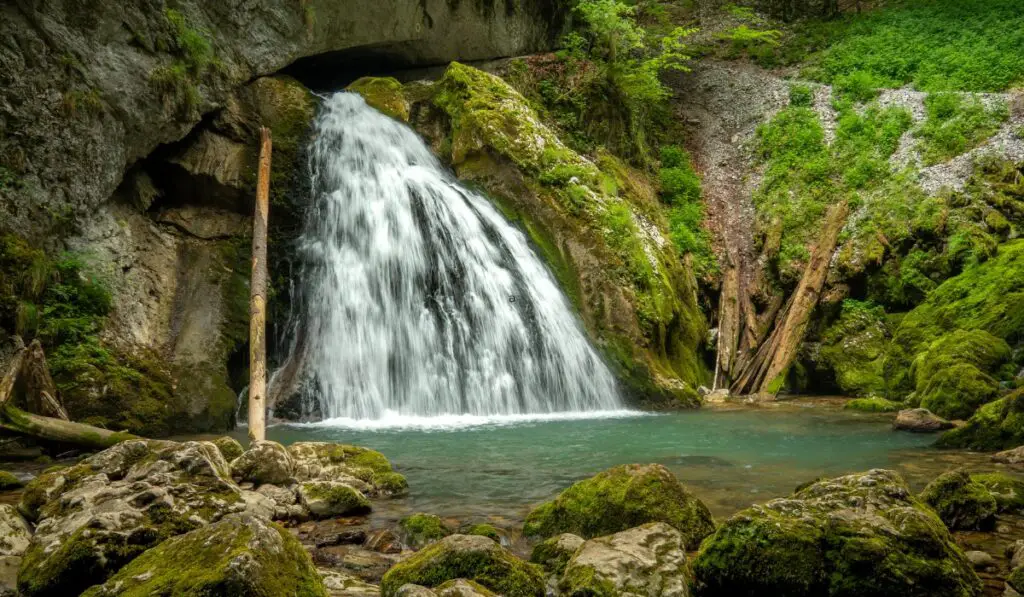
Unveiling the Splendors of Apuseni: A Hiker’s Paradise
The Apuseni Mountains of Romania offer an unparalleled tapestry of natural wonders, historic sites, and enthralling hiking trails. Whether you’re stepping into the echoes of time within a cave, gazing in wonder at a cascading waterfall, or scaling the heights to drink in panoramic vistas, the promise of adventure in Apuseni never wanes. For every traveler with a penchant for nature and a heart for exploration, the trails of the Apuseni Natural Park beckon with tales waiting to be discovered.

